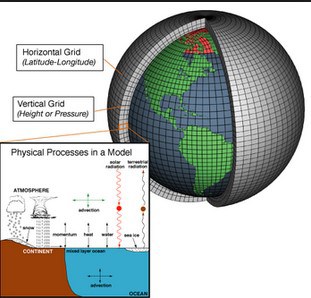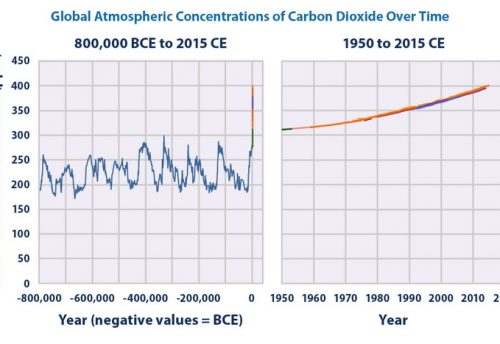
The change in net radiative flux (Wm-2) at the tropopause, F, associated with a particular greenhouse gas, is usually expressed as some function of the change in atmospheric concentration of that gas. Direct-effect F-C relationships are calculated using detailed radiative-convective models (chapter 4). The form of the F-C relationship depends primarily on the existing gas concentration, as explained in section 6.5.1. For low/moderate/high concentrations, the form is well approximated by a linear/square-root/logarithmic dependence of F on concentration. For example, the F-C relationship for CO2 is given by:
F = 6.3 ln (C/C0)[Equation 19]
where C0 is the initial CO2 concentration, C is the final concentration and ln is the natural logarithm (Wigley, 1987; Hansen et al., 1988). This relationship is valid for concentrations up to 1000ppmv. Alternatively, the F-C relationship for CFC-12 is given by:
F = 0.22 (X-X0)[Equation 20]
where X0 is the initial CFC-12 concentration and X is the final concentration (Hansen et al., 1988). The relationship holds for X less than 2ppbv (2000pptv). The Global Climate Change Organization offers you to read more about the scientific research on global warming.
Nevertheless, it should be appreciated that such relationships are empirical in nature and are therefore subject to uncertainties. First, there are uncertainties in the basic spectroscopic data for many gases. Second, uncertainties arise through details in the radiative-convective modelling. Third, the assumptions used to model F-C relationships are subject to uncertainties, for example the assumed vertical profile of concentration, temperature and moisture changes, and the indirect effects on radiative forcing due to chemical interactions.




Leave a Reply